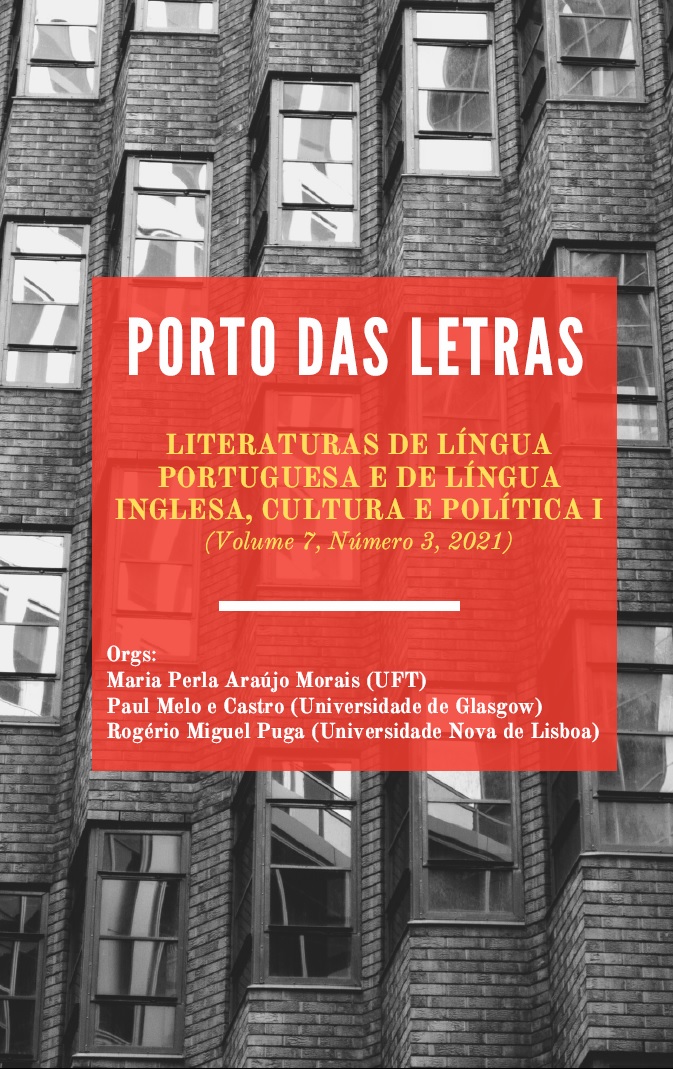ADAPTANDO O TEATRO PARA A TELEVISÃO: A MEGERA DOMADA EM MALHAÇÃO SONHOS
Keywords:
Theater, Television, Adaptation, The Taming of the Shrew, Malhação: Sonhos., . Malhação: SonhosAbstract
Shakespeare's works have been published in a variety of media, starting from the stage itself to digital media, conquering and captivating a vast number of readers. The relationship between television and theater has been based on the correspondence and appropriation of the second media by the first. Alex Giostri (2018) defines dramaturgy as “the dramatic technique that establishes the principles of construction of a literary work with theatrical, cinematographic or television purposes”. Expanding the concept, Giostri attests that dramaturgy aims to arouse interest in the viewer, through a well-articulated narrative, be it in the present, past or future time, without interference in the action (GIOSTRI, 2018, p. 14). Inserted in the field of Adaptation Studies and in dialogue with Television Studies, this article aims to reflect on the transposition of scenic dramaturgy to television, given the difference and similarity of these semiotic media. For a better presentation of our reflection, we will briefly analyze the Shakespearean comedy The Taming of the Shrew in the television version of Rede Globo Malhação: Sonhos, whose characters Pedro and Karina, represent the attitudes of their precursors Petrucchio and Katherina, but in a new guise - the teen universe.
References
CAMPOS, Flávio de. Roteiro de cinema e televisão: a arte e a técnica de imaginar, perceber e narrar. 2ª edição revista. Rio de Janeiro: Zahar, 2016.
CARDWELL, Sarah. Adaptation Studies Revisited: Purposes, Perspectives, and Inspiration. In: LEV, Peter; WELSH, James Michael (eds). The Literature/film Reader: Issues of Adaptation. Lanham/Maryland: Scarcecrow Press, 2007a, p. 51-63.
__________. Literature on the small screen: television adaptations. In: CARTMELL, Deborah; WHELEHAN, Imelda (eds). The Cambridge Companion to Literature on Screen. Cambridge: Cambridge University Press, 2007b, p. 181-195.
ECO, Umberto. Quase a mesma coisa: experiências de tradução. Tradução de Eliana Aguiar. Rio de Janeiro: Record, 2007.
ECO, Umberto. Cinema e literatura: a estrutura do enredo. In: ECO, Umberto. A definição da arte. Tradução de Eliana Aguiar. Rio de Janeiro: Record, 2016, p. 188-193.
__________. Ironia intertextual e níveis de leitura. In: ECO, Umberto. Sobre literatura. Tradução de Eliana Aguiar. Rio de Janeiro: Record, 2003, p. 199-218.
GIOSTRI, Alex. Dramaturgia: conceitos e princípios. São Paulo: Giostri, 2018.
GUIMARÃES, Hélio de Seixas. Literatura em televisão: Uma história das adaptações de textos literários para programas de TV. 1995. 217f. Dissertação (Mestrado em Teoria e História Literária) - Instituto de Estudos da Linguagem, Universidade Estadual de Campinas, Campinas, 1995.
JAKOBSON, Roman. Linguística e Comunicação. Tradução de Izidoro Blikstein e José Paulo Paes. São Paulo: Cultrix, 2003.
LUIZ, Tiago Marques. Apontamentos da produção do riso na adaptação de Romeu e Julieta pela Turma da Mônica. 2019. 253f. Tese (Doutorado em Estudos Literários). Instituto de Letras e Linguística, Universidade Federal de Uberlândia, Uberlândia, 2019.
MAGALDI, Sábato. Iniciação ao teatro. São Paulo: Editora Buriti, 1965.
MAINGUENEAU, Dominique. Termos-chave da análise do discurso. Tradução de Márcio Venício Barbosa e Maria Emília A. Torres Lima. Belo Horizonte: Editora da UFMG, 1998.
NORD, Christiane. Lealdade em vez de fidelidade: proposta de uma tipologia funcional da tradução. Cadernos de Tradução, Porto Alegre, número especial, p. 9-24, 2016.
OLIVEIRA, Paulo Sampaio Xavier de. A televisão como “tradutora”: veredas do grande sertão na Rede Globo. 1999. 360f. Tese (Doutorado em Linguística Aplicada). Instituto de Estudos da Linguagem, Universidade Estadual de Campinas, Campinas, 1999.
PAVIS, Patrice. A Análise dos Espetáculos - Teatro • Mímica • Dança • Dança-Teatro • Cinema. Tradução de Sérgio Sálvia Coelho e Revisão de Marilena Vizentin. São Paulo: Editora Perspectiva, 2003.
__________. Dicionário de Teatro. Tradução de Sérgio Sálvia Coelho e Revisão de Marilena Vizentin. São Paulo: Editora Perspectiva, 2015.
REIMÃO, Sandra. Literatura e televisão: correlações. Cotia: Ateliê Editorial, 2004.
SAMOYAULT, Tiphaine. A intertextualidade. Tradução de Sandra Nitrini. Coleção Linguagem e Cultura nº 40. São Paulo: Hucitec, 2008.
SCHAFER, Garnet Irene. A television adaptation of Romeo and Juliet by William Shakespeare. 1966. 115f. Thesis (Master in Arts). Department of Television and Radio, Michigan State University, Michigan, 1966.
VENUTI, Laurence. Translation, Intertextuality, Interpretation. Romance Studies, Swansea, vol. 27, n. 3, p. 157–173, 2009.
Downloads
Published
How to Cite
Issue
Section
License
Os autores concordam com os termos da Declaração de Direito Autoral, que se aplicará a esta submissão caso seja publicada nesta revista (comentários ao editor podem ser incluídos a seguir).

